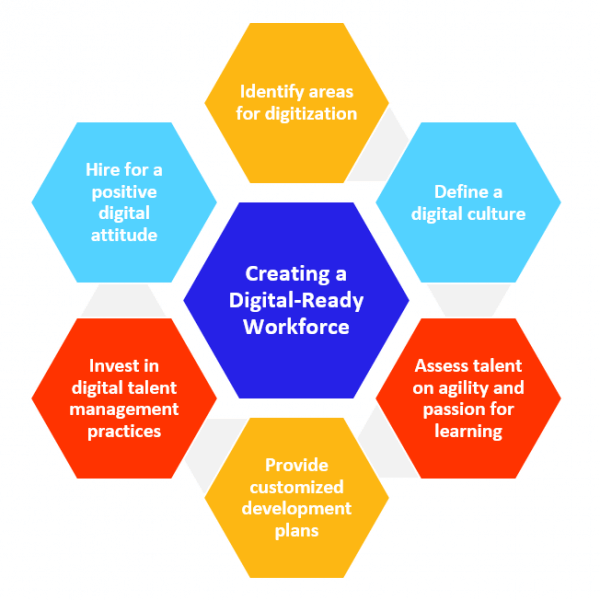In today’s hyper-competitive environment, digital transformation is not just a buzzword but a critical strategy for business survival and growth. Digital transformation involves adopting modern technologies and reimagining traditional business models to stay competitive, innovative, and efficient. Yet, it’s more than just integrating tools or automating processes. At its core, it’s about aligning technology with strategic goals to unlock new value for customers, employees, and stakeholders.
For businesses in the software development industry, digital transformation acts as a pivotal driver of operational agility and market adaptability. It ensures organizations are prepared to pivot in response to evolving customer demands and technological advancements. However, what separates successful transformations from failed attempts is having a clear, well-defined strategy. Without this roadmap, companies risk wasting resources, missing opportunities, and falling behind their more digitally adept competitors.
In a world where customer expectations are shaped by instant gratification and seamless experiences, businesses must embrace transformation proactively. The consequences of inaction are severe: diminished market relevance, inefficient operations, and reduced profitability. The solution lies in leveraging digital transformation as a strategic initiative, enabling companies to bridge the gap between traditional practices and the future of business.
With a robust strategy in place, organizations can seize opportunities, mitigate risks, and position themselves as industry leaders in a rapidly changing landscape.

Understanding the Pillars of Digital Transformation
Digital transformation rests on several foundational pillars that ensure its effectiveness and sustainability. These pillars interconnect technology, culture, and processes, offering a holistic approach to modernization.
Key Technologies Empowering Transformation
Technologies like cloud computing, artificial intelligence (AI), Internet of Things (IoT), and big data analytics form the backbone of digital transformation. These innovations provide businesses with the tools to analyze customer behaviors, optimize workflows, and automate complex processes. For example, AI-powered analytics can uncover actionable insights from data, enabling informed decision-making. Meanwhile, IoT devices enhance connectivity across operations, making businesses more responsive and efficient.
Building a Digital-Ready Culture
Technology alone cannot drive transformation. A digital-ready culture, characterized by agility, innovation, and continuous learning, is critical. This requires leaders to set the tone by championing change and providing resources for upskilling employees. Equipping teams with digital literacy and fostering a mindset of adaptability ensures that organizations can maximize the value of their technological investments.

source: peoplestrong.com
Digital transformation isn’t a one-time event but an ongoing process requiring strategic alignment between tools, people, and processes. When these pillars work in harmony, businesses can build resilient and scalable digital ecosystems that adapt to future demands.
Benefits of a Digital Transformation Strategy
A thoughtfully designed digital transformation strategy can deliver significant advantages, from improved operational efficiency to stronger customer relationships.
Operational Efficiency and Cost Optimization
Digital tools enable businesses to streamline operations, reduce redundancies, and optimize resources. For instance, automating routine tasks frees employees to focus on high-value work, increasing productivity. Additionally, cloud-based platforms provide scalability and cost savings by eliminating the need for extensive physical infrastructure.
Enhancing Customer Experiences
Customers expect personalized, seamless interactions across every touchpoint. Digital transformation empowers businesses to deliver such experiences by leveraging data analytics and AI. For example, predictive analytics can anticipate customer needs, enabling companies to tailor products and services proactively. This not only enhances satisfaction but also fosters loyalty and long-term engagement.
Competitive Advantage
A well-executed transformation strategy enables businesses to outpace competitors by quickly adapting to market shifts and customer demands. By embracing digital-first approaches, companies can capture new opportunities and maintain relevance in a crowded marketplace.
Table: Key Benefits of Digital Transformation
| Benefit | Description |
| Efficiency | Streamlines operations and reduces costs through automation and optimization. |
| Customer Engagement | Enhances interactions with personalized, data-driven solutions. |
| Market Competitiveness | Positions businesses to adapt rapidly to industry changes and innovations. |
Challenges in Crafting a Digital Transformation Strategy
While the benefits are compelling, developing a robust digital transformation strategy presents significant challenges.

Overcoming Organizational Resistance
Change often meets resistance, particularly from employees accustomed to traditional workflows. This can hinder progress and dampen morale. Addressing these concerns requires transparent communication, showcasing how transformation benefits individuals and teams. Engaging employees in the process, offering training programs, and celebrating early wins can foster acceptance and enthusiasm.
Bridging Skills and Technology Gaps
Another challenge is the disparity between current skill sets and the demands of modern technologies. Organizations must invest in reskilling initiatives and seek partnerships with providers of custom enterprise software development services to bridge these gaps effectively.
Legacy Systems and Integration
Many businesses struggle to integrate outdated systems with new technologies. Developing a phased approach to migration and leveraging middleware solutions can help overcome these hurdles without disrupting operations.
Acknowledging and addressing these challenges early on paves the way for a smoother, more effective transformation journey.
Building a Future-Ready Digital Transformation Strategy
Creating a future-ready digital transformation strategy requires careful planning and adaptability to align with long-term goals.
Assessing Readiness and Setting Goals
Start by conducting a comprehensive assessment of your organization’s current state. Identify gaps in technology, processes, and skills. Based on these insights, define clear, measurable objectives. For instance, setting goals such as achieving 50% process automation within two years provides a tangible benchmark for progress.

Continuous Monitoring and Adaptation
A successful strategy is dynamic, evolving with market trends and technological advancements. Establish mechanisms for continuous monitoring, such as KPIs and regular feedback loops. Adaptation is crucial to address emerging challenges and seize new opportunities, ensuring that the strategy remains relevant and impactful.
A future-ready strategy prioritizes scalability and sustainability, enabling organizations to thrive in an unpredictable business landscape.
The Time to Transform is Now
Digital transformation is no longer optional but essential for businesses seeking to secure their future. The risks of falling behind are too great, while the opportunities for growth, innovation, and efficiency are boundless.
By embracing a well-structured strategy, businesses can navigate the complexities of transformation confidently. From fostering a digital-first culture to leveraging cutting-edge technologies, the journey demands commitment but promises significant rewards.
Now is the time for action. Those who invest in digital transformation today will lead tomorrow’s markets, setting benchmarks for innovation and success.


